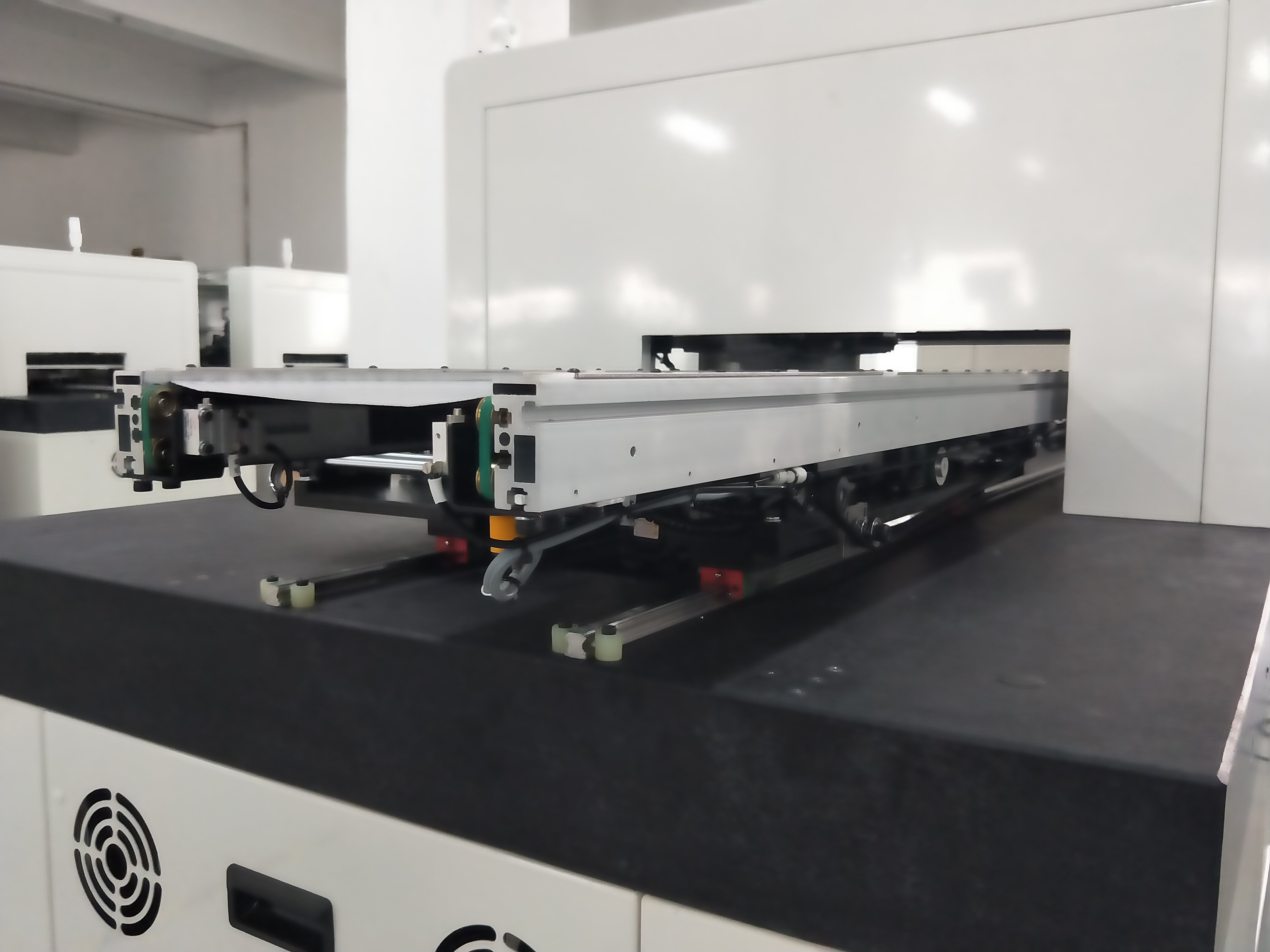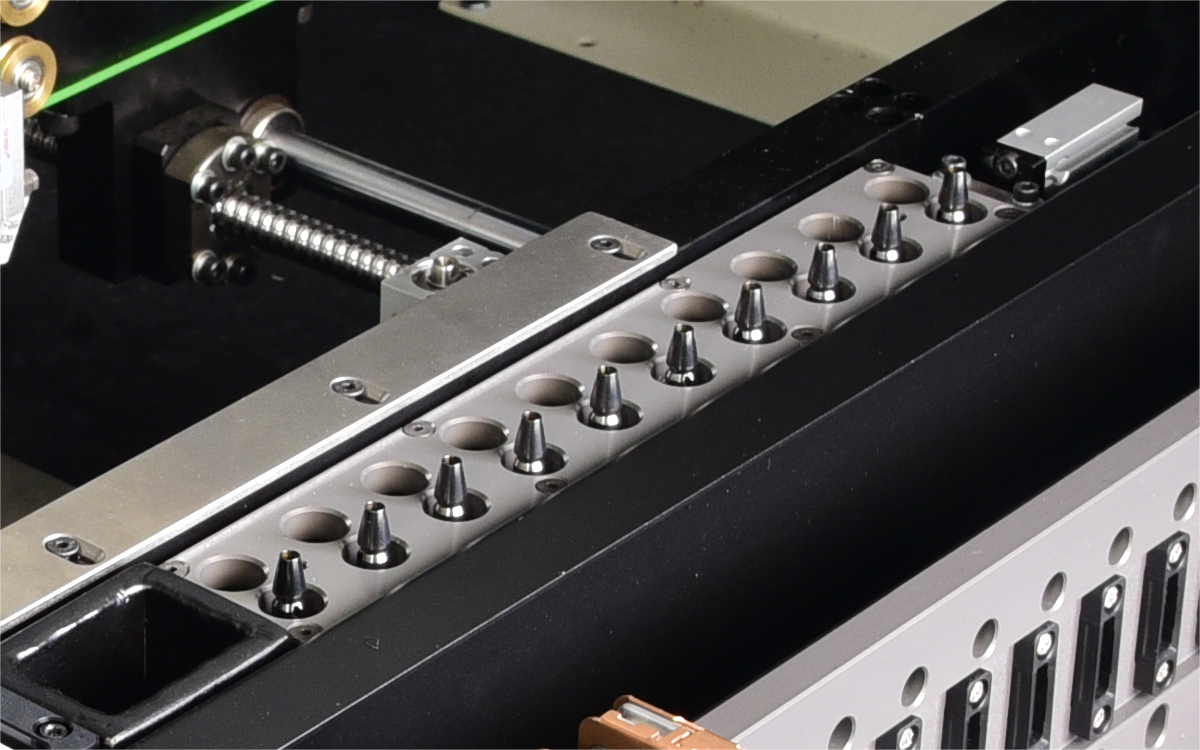E-Mail-Formatfehler
emailCannotEmpty
emailDoesExist
pwdLetterLimtTip
inconsistentPwd
pwdLetterLimtTip
inconsistentPwd


Enhancing Efficiency: Exploring China PCB SMT Production Machine Lines
In the dynamic landscape of electronics manufacturing, China's PCB SMT production machine lines have emerged as key players, driving efficiency and innovation in the industry. This article delves into the significance of these production lines, their impact on the global market, and the latest advancements shaping their future.
Understanding China's PCB SMT Production Machine Lines
China's PCB SMT production machine lines play a pivotal role in the manufacturing process, facilitating the assembly of electronic components onto printed circuit boards (PCBs) with precision and speed. These production lines encompass a range of machines, including solder paste printers, pick and place machines, reflow ovens, and inspection systems, seamlessly integrated to optimize efficiency and quality.
Key Components of China's PCB SMT Production Machine Lines
● Solder Paste Printers: Solder paste printers are the first step in the assembly process, applying solder paste onto PCBs with precision. China's production lines boast advanced printers equipped with high-resolution vision systems, ensuring accurate deposition of solder paste for reliable solder joints.
● Pick and Place Machines: Central to PCB assembly, pick and place machines meticulously position electronic components onto PCBs. China's production lines feature high-speed pick and place machines with multi-head configurations, maximizing throughput while maintaining accuracy.
● Reflow Ovens: Reflow ovens are used to melt the solder paste, creating permanent connections between components and PCBs. China's production lines utilize state-of-the-art reflow ovens with precise temperature control, ensuring consistent and reliable soldering across all assemblies.
● Inspection Systems: Inspection systems play a crucial role in quality assurance, detecting defects and ensuring compliance with industry standards. China's production lines integrate advanced inspection systems, including automated optical inspection (AOI) and X-ray inspection, to identify defects early in the process and minimize rework.
Advancements Driving Efficiency and Quality
China's PCB SMT production machine lines are constantly evolving, driven by advancements in technology and manufacturing practices. Key advancements include:
● Automation: Increasing automation reduces manual intervention, streamlining production processes and minimizing human error.
● Industry 4.0 Integration: Integration with Industry 4.0 principles enables real-time monitoring, data analytics, and predictive maintenance, optimizing production efficiency and uptime.
● AI and Machine Learning: AI and machine learning algorithms enhance machine performance, optimizing placement accuracy, and identifying potential defects with greater precision.
The Global Impact of China's PCB SMT Production Machine Lines
China's PCB SMT production machine lines have had a profound impact on the global electronics manufacturing landscape, shaping industry dynamics and driving significant transformations. Here's an exploration of their global impact:
1. Market Dominance: The PCB SMT production machine lines have propelled the country to become a dominant force in electronics manufacturing. With a vast infrastructure and robust manufacturing capabilities, China has emerged as the world's leading producer of electronic components and assemblies.
2. Cost Competitiveness: The cost-effectiveness of China's production lines has made the country a preferred destination for outsourcing PCB assembly. Manufacturers worldwide leverage China's lower labor costs, economies of scale, and efficient supply chains to optimize production costs and remain competitive in the global market.
3. Supply Chain Integration: China's production lines have fostered deep integration within the global electronics supply chain. Many multinational companies rely on Chinese manufacturers for PCB assembly, sourcing components, and fulfilling production needs. This integration has created interdependence and interconnectedness across borders, shaping global trade patterns and relationships.
4. Technological Advancements: The PCB SMT production machine lines drive technological advancements and innovation within the industry. Chinese manufacturers continuously invest in research and development, pushing the boundaries of machine capabilities, automation, and efficiency. These advancements not only benefit domestic production but also contribute to global technological progress.
5. Expansion of Market Reach: Chinese manufacturers export PCB SMT production machines and equipment to markets worldwide, expanding their market reach and influence. By offering high-quality, cost-effective solutions, China has become a significant supplier of production equipment to companies across Asia, Europe, North America, and beyond.
6. Competition and Collaboration: China's presence in the global electronics manufacturing arena has intensified competition while also fostering collaboration and partnerships. International manufacturers face competition from Chinese counterparts, spurring innovation and driving improvements in efficiency and quality. Additionally, collaborations between Chinese and foreign companies facilitate knowledge exchange, technology transfer, and joint ventures, driving collective advancements in the industry.
7. Global Industry Trends: The PCB SMT production machine lines influence and shape global industry trends. As Chinese manufacturers adopt and implement emerging technologies, industry standards, and best practices, they set benchmarks for efficiency, quality, and sustainability that resonate globally. Trends such as automation, digitization, and sustainability championed by Chinese manufacturers influence industry practices worldwide.
Navigating Challenges and Seizing Opportunities
As China's PCB SMT production machine lines continue to shape the global electronics manufacturing landscape, companies must navigate challenges and seize opportunities to thrive in this dynamic environment. Here's a closer look at how manufacturers can navigate challenges and capitalize on opportunities:
Challenges:
1. Rising Labor Costs: China's labor costs have been steadily increasing, challenging the cost-effectiveness of manufacturing in the country. To remain competitive, manufacturers must explore automation and robotics to reduce reliance on manual labor and improve operational efficiency.
2. Supply Chain Disruptions: Global events such as trade tensions, natural disasters, and the COVID-19 pandemic have exposed vulnerabilities in the global supply chain. To mitigate risks, manufacturers should diversify their supply chains, identify alternative sources of raw materials, and implement robust risk management strategies.
3. Technological Disruptions: Rapid technological advancements, such as AI, IoT, and Industry 4.0, are reshaping the manufacturing landscape. Companies must embrace digital transformation, invest in emerging technologies, and upskill their workforce to stay ahead of the curve and remain competitive in the market.
4. Regulatory Compliance: Compliance with international regulations and standards poses a challenge for manufacturers, particularly in areas such as environmental sustainability, product safety, and data security. Companies must stay abreast of regulatory developments, implement robust compliance programs, and prioritize ethical and responsible business practices.
Opportunities:
1. Innovation and Differentiation: Innovation is key to staying ahead in the competitive market. Manufacturers can differentiate themselves by developing innovative products, technologies, and solutions that address emerging market needs and trends.
2. Market Expansion: China's PCB SMT production machine lines offer opportunities for market expansion and diversification. Companies can leverage China's manufacturing capabilities to access new markets, expand their customer base, and capitalize on growing demand for electronics worldwide.
3. Collaboration and Partnerships: Collaboration with Chinese manufacturers and strategic partnerships can unlock new opportunities for growth and innovation. By pooling resources, sharing expertise, and leveraging complementary strengths, companies can achieve mutual benefits and drive collective advancements in the industry.
4. Focus on Sustainability: Sustainability has become a key driver of business success and consumer preference. Manufacturers can capitalize on the growing demand for sustainable products and practices by adopting eco-friendly manufacturing processes, reducing carbon footprint, and promoting corporate social responsibility initiatives.
Conclusion: Embracing Innovation for Sustainable Growth
In conclusion, China's PCB SMT production machine lines play a vital role in the global electronics manufacturing ecosystem, driving efficiency, and quality. With continuous advancements and a commitment to innovation, these production lines are poised to shape the future of electronics manufacturing, driving sustainable growth and competitiveness in the industry. As companies embrace the opportunities presented by China's production lines, they must prioritize collaboration, adaptability, and innovation to thrive in an ever-evolving market landscape.

